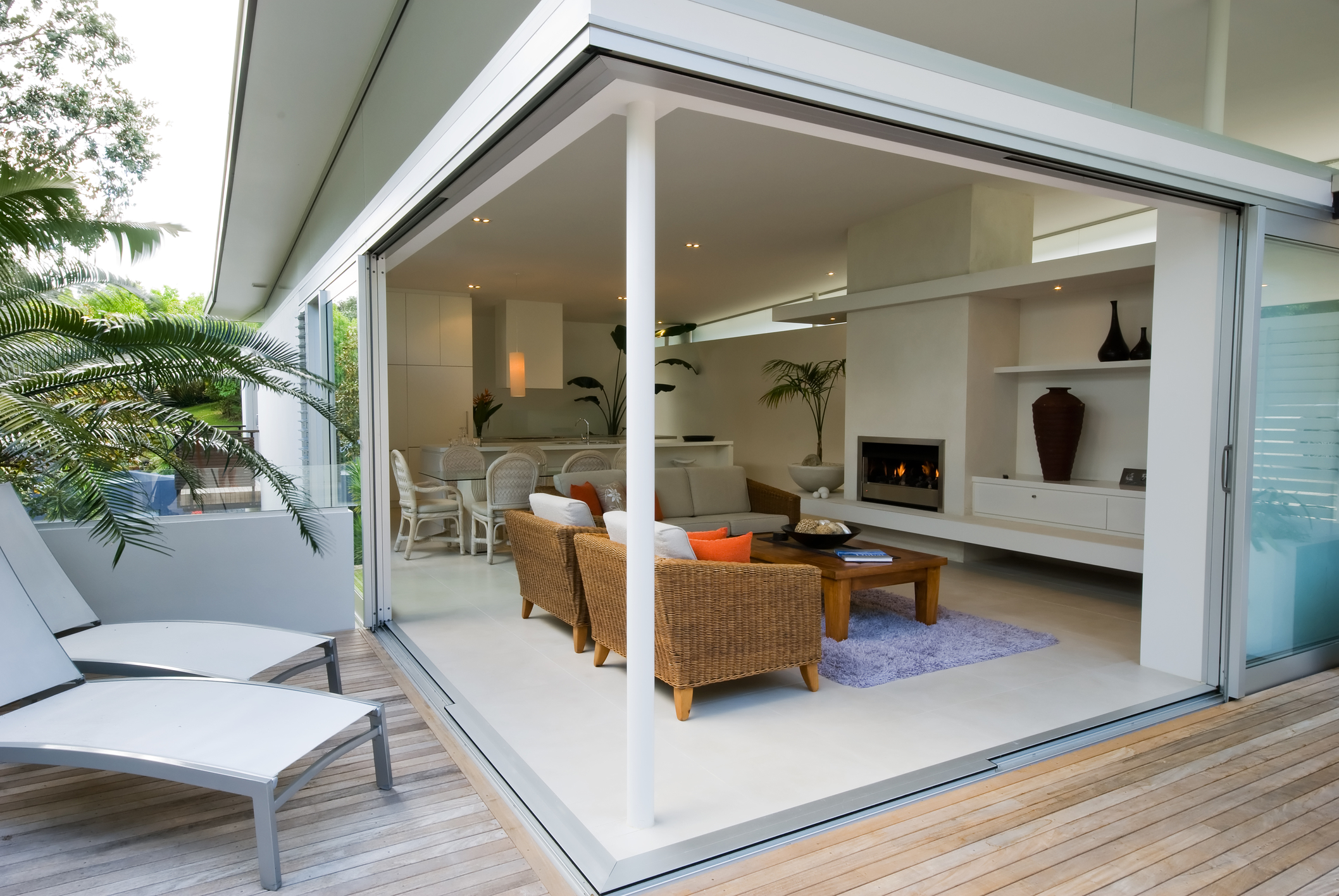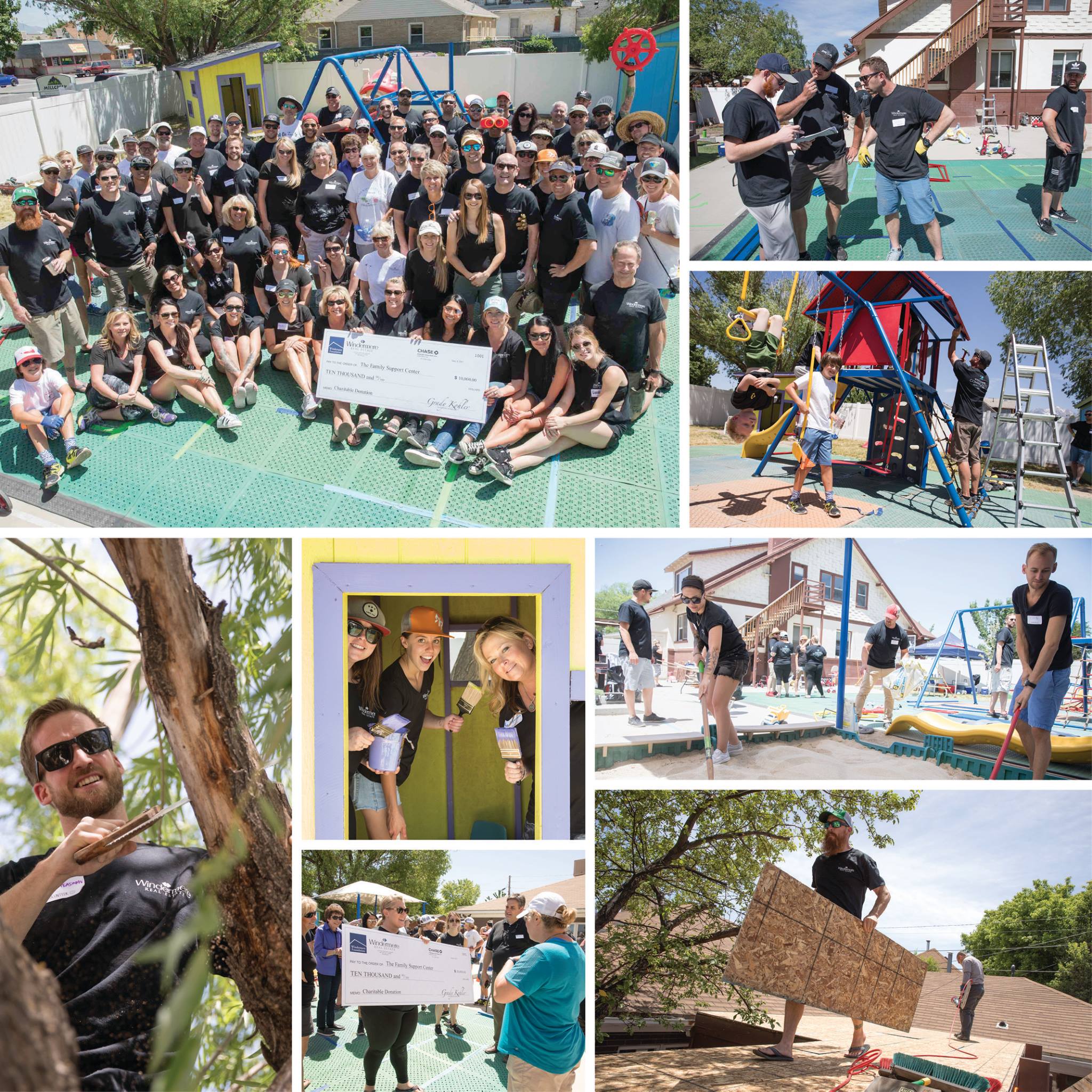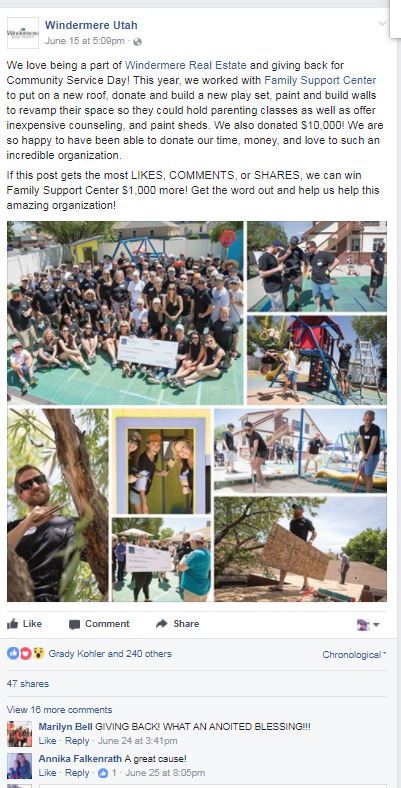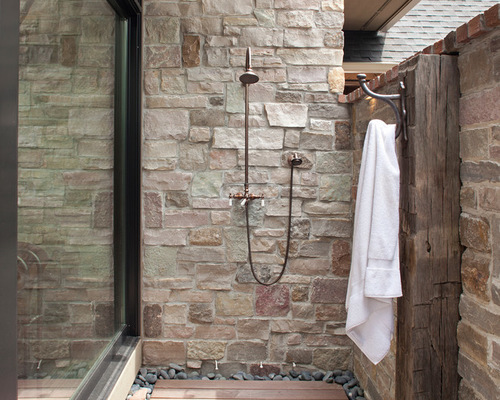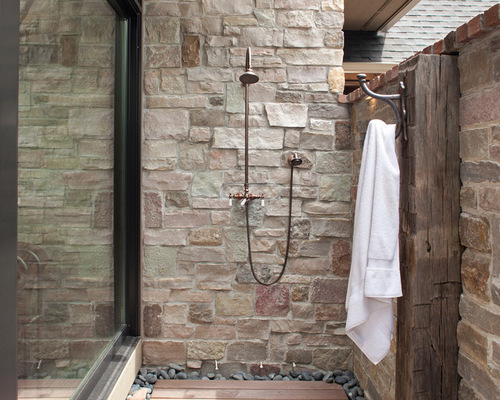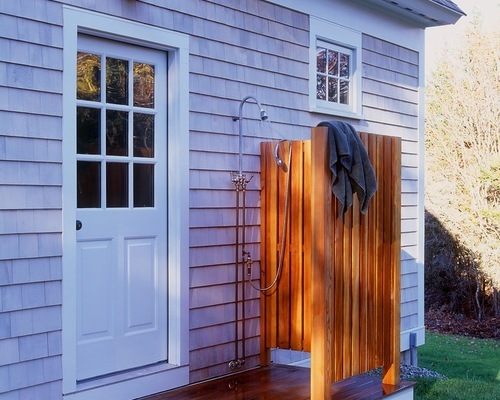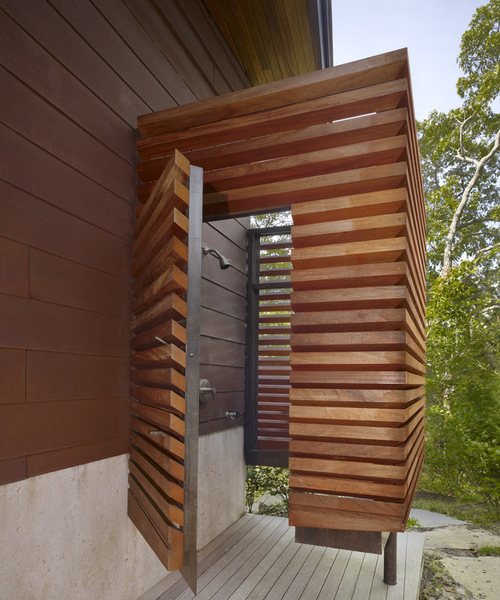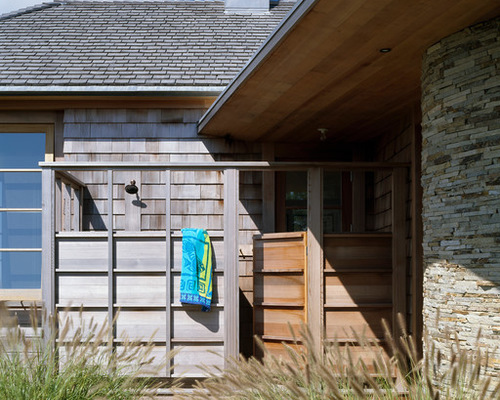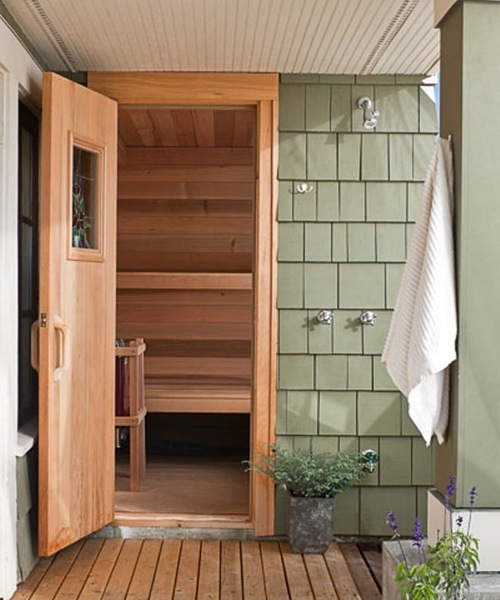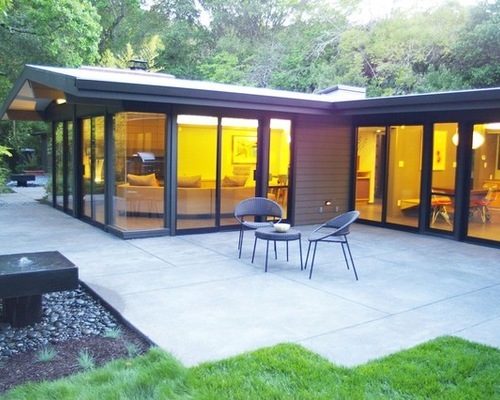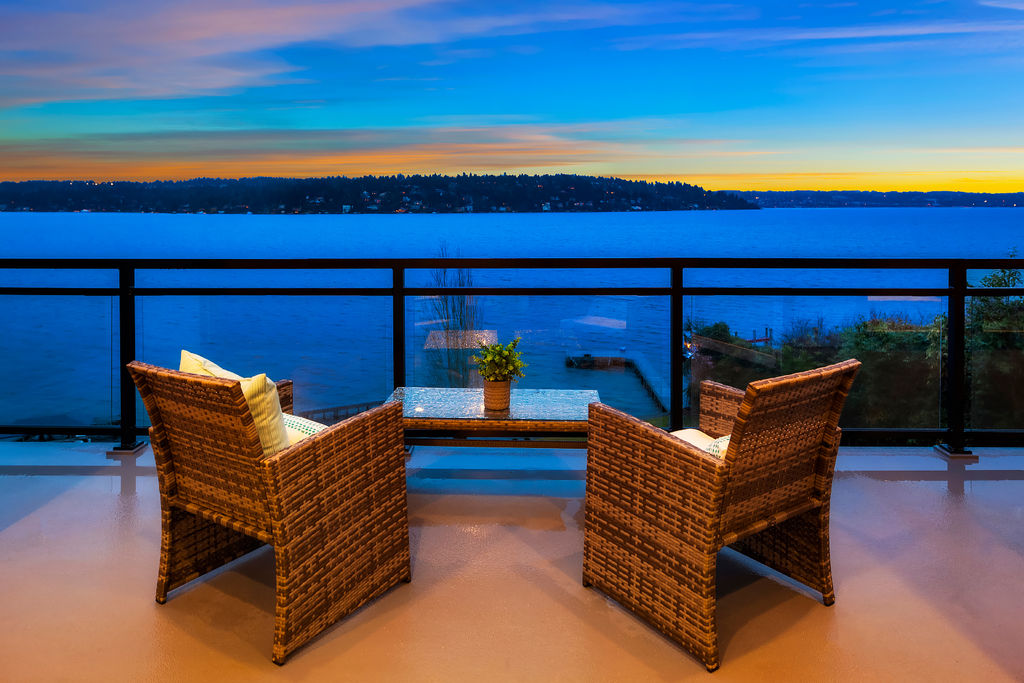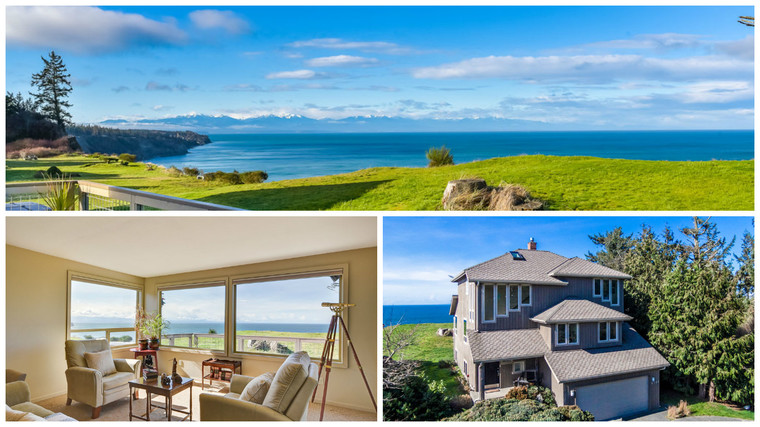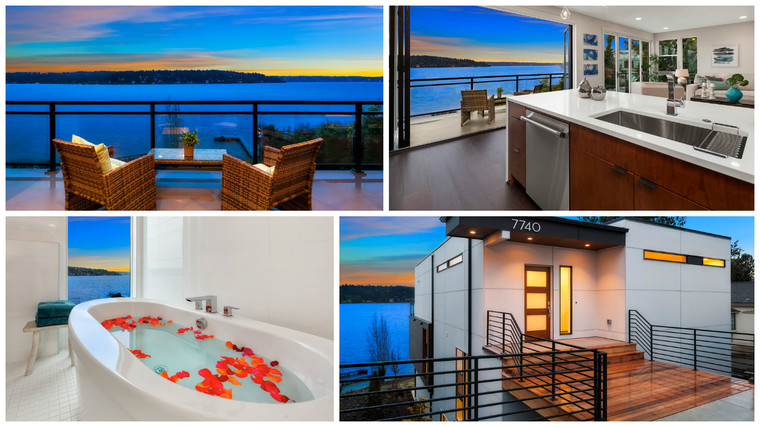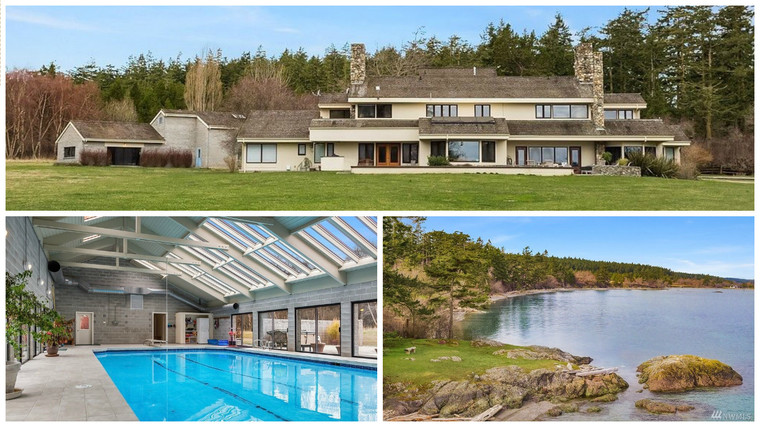Concrete patios are often found in older homes, especially those built in the ’70s. But by now they’ve cracked and crumbled, leaving many homeowners wondering how to replace them, or even hoping to reclaim some of the green space lost by a particularly large patio.
If you count yourself in this group, here you’ll learn how to improve your outdoor space by removing or shrinking your concrete patio, or replacing an old cracked patio with a fresh new one that better suits your style today.
Concrete Patio 1: Falling Waters Landscape, original photo on Houzz
Getting rid of a concrete patio enables you to replace it with a more attractive option — like pavers, stone or a modern combination, as with this patio by Falling Waters Landscape, featuring a grid of concrete rectangles divided by permeable plantings. It can also allow you to create more lawn or garden space.
Best time to do it: When the weather is dry and temperate enough to permit heavy-duty work outdoors.
Why: “Concrete cracks, it’s not a very pretty product, and there are a lot of better solutions on the market,” says Micah Dennis of Paradise Restored Landscaping & Exterior Design.
Who to hire: This project requires heavy machinery and can have hidden pitfalls (like rebar lurking in your concrete), so it’s only a DIY if you earn your bread and butter in home improvement. If that doesn’t sound like you, it’s best to hire a licensed contractor.
Related: Deck Builders in Your Area
Tip: Dennis warns that many contractors won’t take the project if they aren’t installing a replacement patio or garden, so have a plan in place when you start interviewing professionals.
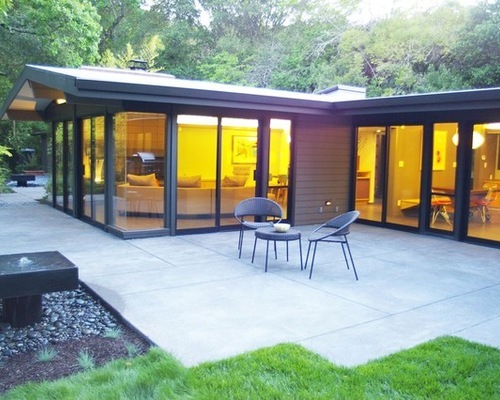
Concrete Patio 2: Hart Wright Architects AIA, original photo on Houzz
Cost range: Between $800 and $1,000 for demolition alone. The total cost of your project will depend on what you decide to put in the patio’s place.
Typical project length: One day.
Permit required: None for the project, although some municipalities require a permit for dumping concrete, so call ahead.
Project considerations: While your contractor will check with utility companies to make sure there aren’t any gas lines lurking beneath your patio’s surface, that doesn’t mean there’s nothing under there. If the crew discovers rebar or an unexpected gas line, the project may be slightly delayed or cost more.
Your contractor will also likely use a jackhammer to remove the concrete, so it might be a good idea to plan to be gone for the day so you aren’t disturbed by the noise. Give your neighbors due consideration as well.

Concrete Patio 3: Mary Prince Photography, original photo on Houzz
First steps: Your contractor will protect your windows with plywood, as concrete chunks can spray up and crack or break the glass or cause pits.
Your contractor may also take some “before” photos to record the way the elevations worked for when it’s time to install the new materials.
Then it’s time to remove your concrete. If you’re simply reducing the size of your patio, the contractor will start by using a concrete cutting saw to cut the concrete joints out. “If you don’t cut it, then you’re going to start jackhammering, and the rest of the patio is just going to crack,” Dennis explains.
If you’re removing the entire patio, the contractor will use both the saw and jackhammer to break the patio into chunks that crews can then comfortably remove.
After that the only thing left to do is haul out the concrete chunks — or recycle them as pavers or a stacked garden wall — and start work on whatever you have planned to replace it.
Concrete patios are often found in older homes, especially those built in the ’70s. But by now they’ve cracked and crumbled, leaving many homeowners wondering how to replace them, or even hoping to reclaim some of the green space lost by a particularly large patio.
If you count yourself in this group, here you’ll learn how to improve your outdoor space by removing or shrinking your concrete patio, or replacing an old cracked patio with a fresh new one that better suits your style today.
Concrete Patio 1: Falling Waters Landscape, original photo on Houzz
Getting rid of a concrete patio enables you to replace it with a more attractive option — like pavers, stone or a modern combination, as with this patio by Falling Waters Landscape, featuring a grid of concrete rectangles divided by permeable plantings. It can also allow you to create more lawn or garden space.
Best time to do it: When the weather is dry and temperate enough to permit heavy-duty work outdoors.
Why: “Concrete cracks, it’s not a very pretty product, and there are a lot of better solutions on the market,” says Micah Dennis of Paradise Restored Landscaping & Exterior Design.
Who to hire: This project requires heavy machinery and can have hidden pitfalls (like rebar lurking in your concrete), so it’s only a DIY if you earn your bread and butter in home improvement. If that doesn’t sound like you, it’s best to hire a licensed contractor.
Related: Deck Builders in Your Area
Tip: Dennis warns that many contractors won’t take the project if they aren’t installing a replacement patio or garden, so have a plan in place when you start interviewing professionals.
Concrete Patio 2: Hart Wright Architects AIA, original photo on Houzz
Cost range: Between $800 and $1,000 for demolition alone. The total cost of your project will depend on what you decide to put in the patio’s place.
Typical project length: One day.
Permit required: None for the project, although some municipalities require a permit for dumping concrete, so call ahead.
Project considerations: While your contractor will check with utility companies to make sure there aren’t any gas lines lurking beneath your patio’s surface, that doesn’t mean there’s nothing under there. If the crew discovers rebar or an unexpected gas line, the project may be slightly delayed or cost more.
Your contractor will also likely use a jackhammer to remove the concrete, so it might be a good idea to plan to be gone for the day so you aren’t disturbed by the noise. Give your neighbors due consideration as well.
Concrete Patio 3: Mary Prince Photography, original photo on Houzz
First steps: Your contractor will protect your windows with plywood, as concrete chunks can spray up and crack or break the glass or cause pits.
Your contractor may also take some “before” photos to record the way the elevations worked for when it’s time to install the new materials.
Then it’s time to remove your concrete. If you’re simply reducing the size of your patio, the contractor will start by using a concrete cutting saw to cut the concrete joints out. “If you don’t cut it, then you’re going to start jackhammering, and the rest of the patio is just going to crack,” Dennis explains.
If you’re removing the entire patio, the contractor will use both the saw and jackhammer to break the patio into chunks that crews can then comfortably remove.
After that the only thing left to do is haul out the concrete chunks — or recycle them as pavers or a stacked garden wall — and start work on whatever you have planned to replace it.
By Christine Tusher, Houzz
 Generous donations to the Windermere Foundation over the years have enabled Windermere offices to continue to support local non-profits like LULAC. If you’d like to help support programs for low-income and homeless families in your community, please click on the Donate button.
Generous donations to the Windermere Foundation over the years have enabled Windermere offices to continue to support local non-profits like LULAC. If you’d like to help support programs for low-income and homeless families in your community, please click on the Donate button. Facebook
Facebook
 X
X
 Pinterest
Pinterest
 Copy Link
Copy Link


